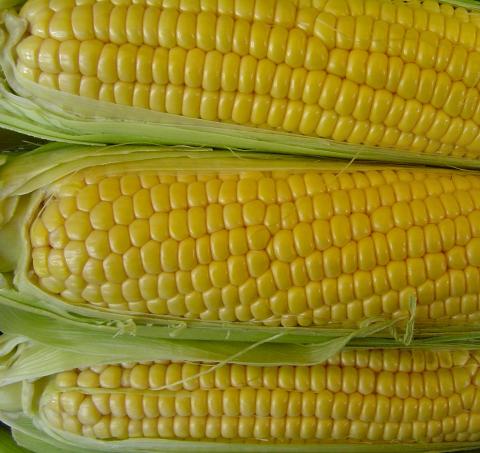
Evaluate the potential of a rust as a biocontrol agent
In the corn plots of the GQE laboratory on the Saclay plateau, black bindweed (Fallopia convolvulus) proliferates from May onwards, requiring repeated weeding. For several years, during the month of August, the knotweeds are literally "burned" in a few weeks by the Puccinia polygoni rust. This blight infects different species of Geranium spp. (aecial host) in early spring, before moving on to Fallopia sp. (alternate host). On Fallopia, the rust multiplies asexually: it produces urediniospores that are spread by the wind, then teliospores that will produce basidiospores the following spring, capable of infecting geraniums. Local populations of the rust (P. polygoni) appear to be extremely aggressive, destroying all infected black bindweed. However, because of the late death of the plants, early flowering knotweeds are able to produce seeds.
Figure:
A. Infected black bindweed at the base of a corn plant.
B. Within a few weeks, almost all of the black bindweeds is killed.
C. Life cycle of Puccinia polygoni (macrocyclic heterocyst rust). In green, the proposed biocontrol strategy, in red the key stages of sexual reproduction, in blue the seasons. (Photos: F. Suffert, P. Frey)
The objective of this project is to study the impact of rust on Fallopia, to evaluate its potential as a biocontrol agent and to study the role of the phenology of the two protagonists in the evolution of this pathosystem. We propose to perform early inoculations on black bindweed (Fallopia) in order to test whether the absence of rust (Puccinia) in early spring is due to the length of the cycle passage on geranium, and thus to shorten the rust cycle. We will also explore by mathematical modelling the consequences of cycle shifts on the maintenance of the pathosystem, the aggressiveness of the rust (Puccinia) and the nature and intensity of the selection pressure exerted on the plant. In the context of the agro-ecological transition, this project should provide new knowledge on the role of complex trophic interactions taking place in landscapes and their impact on the quantity of weeds in agricultural plots.
This 2022-2023 project involves:
- 2 C-BASC labs and Graduate School Biosphera of the university: Adrienne Ressayere as a carrier (GQE-Le Moulon, INRAE), Nathalie Galic (GQE-Le Moulon, INRAE), Judith Legrand (GQE-Le Moulon, UPSaclay), Frédéric Suffert (BIOGER, INRAE)
- 1 external laboratory: INRAE Grand Est-Nancy (Pascal Frey)

